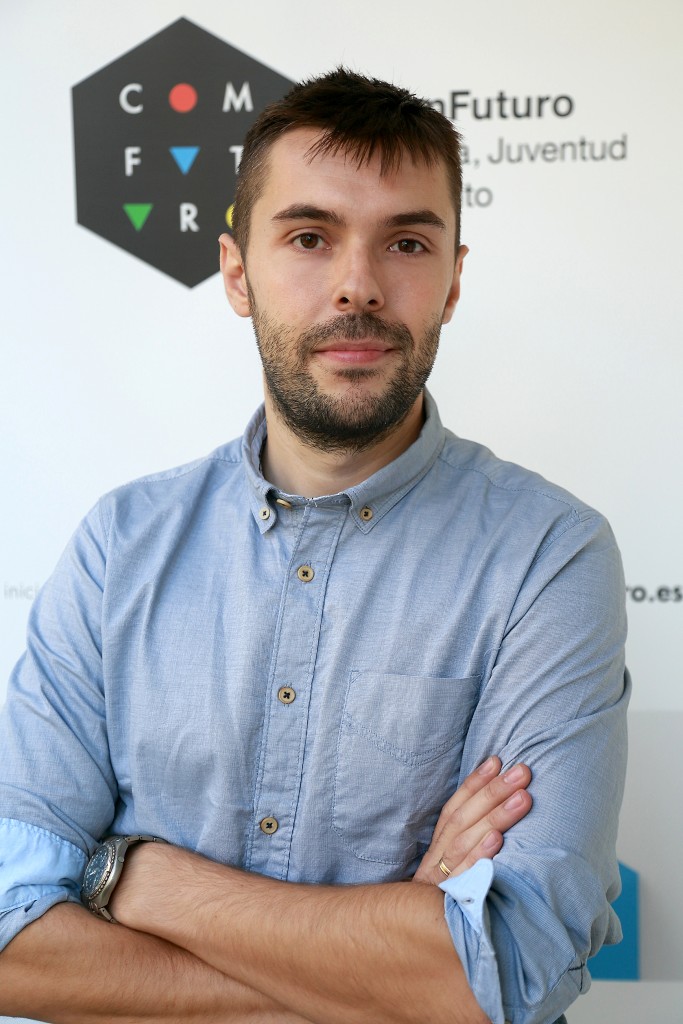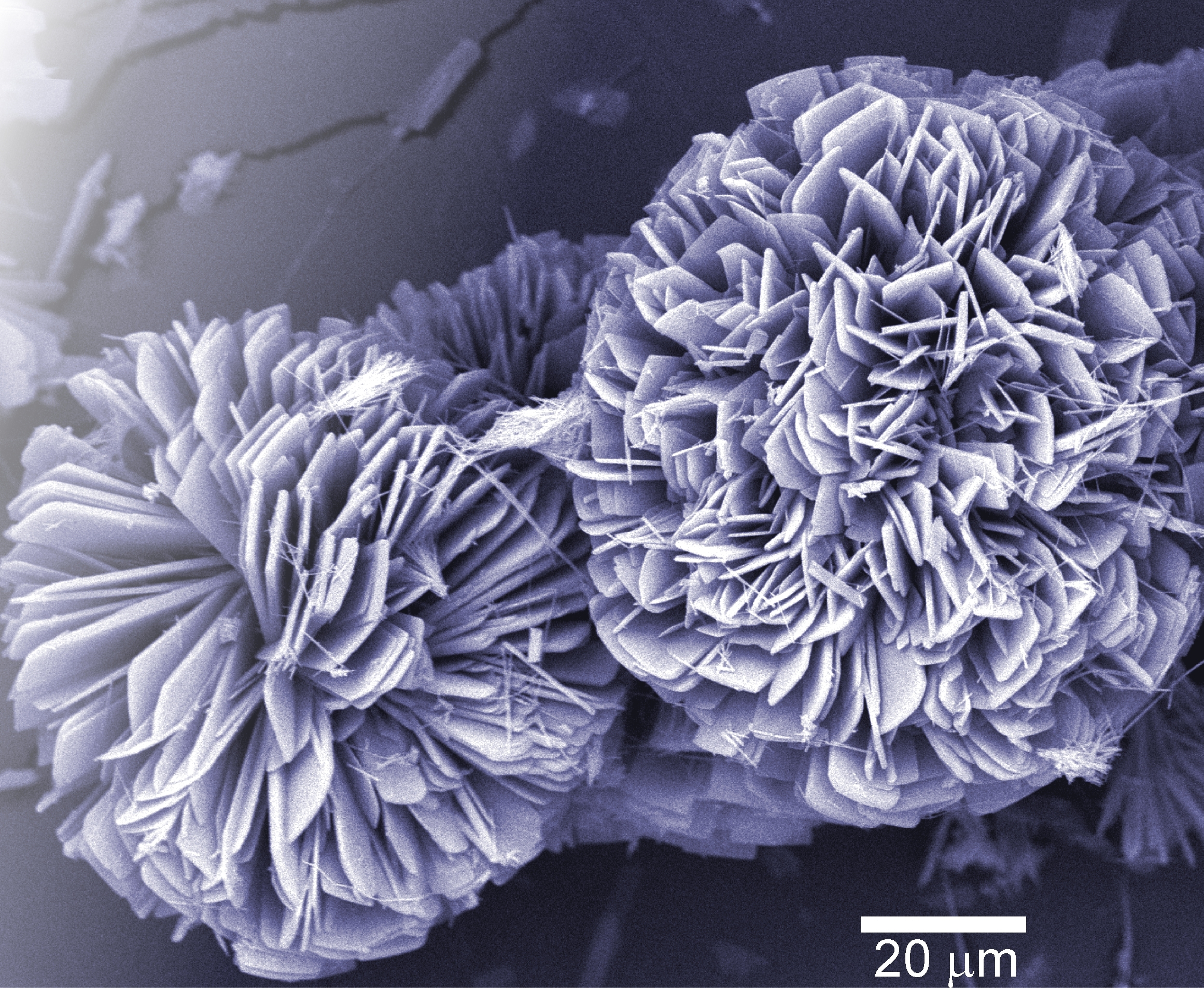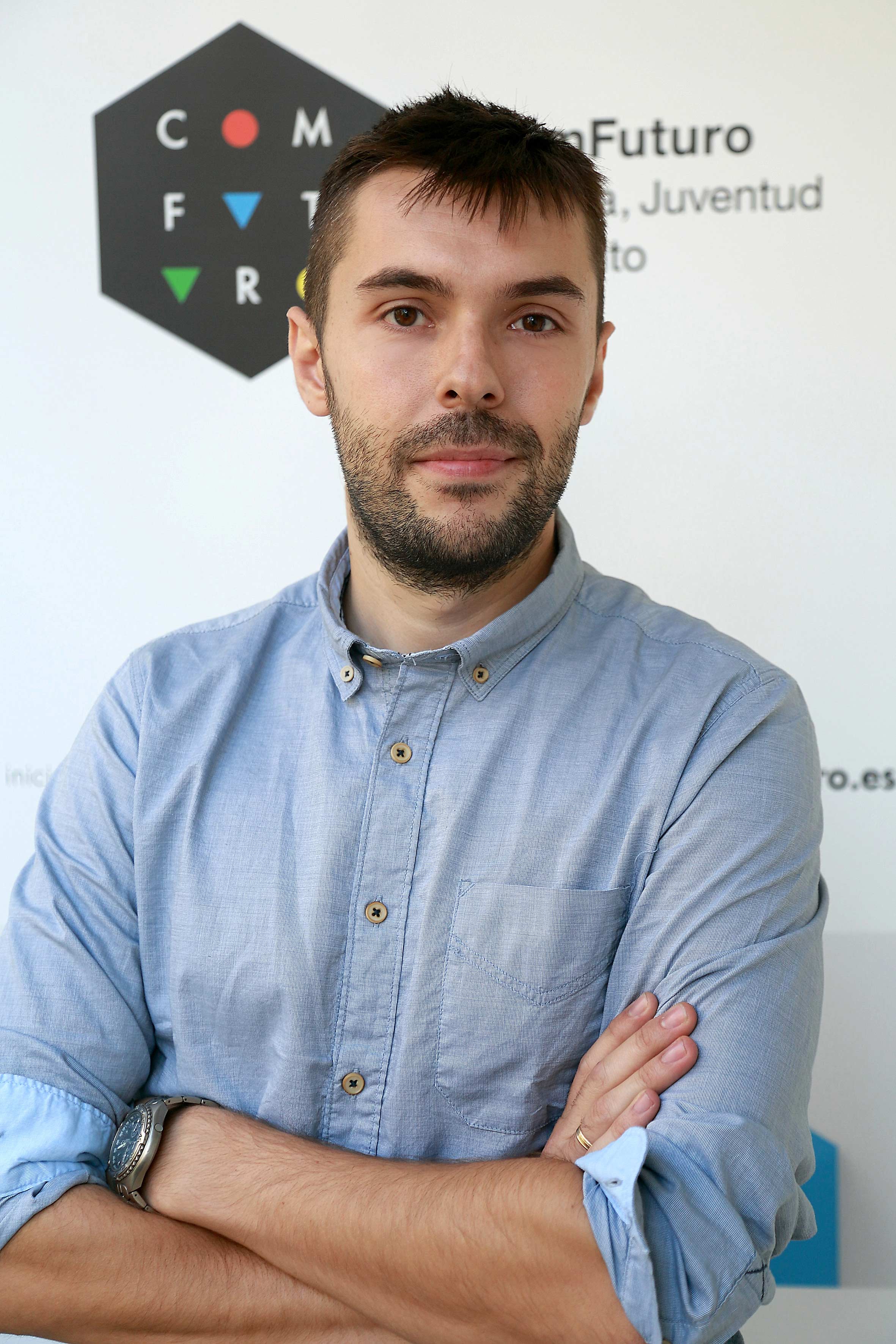
Dr. Felipe Gándara, a chemistry graduate from the Autonomous University of Madrid (UAM), completed his doctoral thesis at the Materials Science Institute of Madrid – CSIC, obtaining the special doctoral prize at the Faculty of Sciences of the UAM, in 2009. That same year, he received an offer to work at the University of California, Los Angeles, as a post-doctoral researcher, from where he moved in 2012 to the prestigious University of California, Berkeley. He is the author of more than 40 scientific publications in high-impact international journals, such as Science, Nature Communications, or J. Amer. Chem. Soc, among others, as well as six patents. ComFuturo Researcher (I edition) at the Materials Science Institute of Madrid, CSIC, where he developed his project “Metal-organic networks with high electronic conductivity for energy storage“. His line of research is focused on the preparation and structural study of new multifunctional crystalline materials, with applications in fields such as catalysis or the storage and capture of gases of energetic interest.

Project Summary
The project aims to prepare new multifunctional materials that combine high porosity and specific surface area with electronic conduction properties for use in energy storage devices, such as batteries or super-capacitors. The project focuses on the development of materials of a metal-organic framework, MOFs. These are a class of materials consisting of metal centres and organic ligands and which present structures with pores and cavities in their interior. These materials are capable of exhibiting high specific surface area values. However, there are few examples of MOF materials that, being porous, exhibit intrinsic electrical conductivity. The aim is to obtain new MOFs with the combination of metallic elements with redox activity, together with organic ligands that present suitable characteristics to facilitate charge mobility along the structures. This includes organic molecules that feature nuclei with high electron delocalization, such as anthracenes or triphenylenes, but also includes functional groups suitable for facilitating electronic communication with metal centres, such as quinonic groups or thiolates.
The preparation of the new materials will involve the reaction under solvothermal conditions of combinations of metallic element salts and organic ligands such as those mentioned above. The high porosity will be achieved by following the traditional strategy in preparing MOFs (using ligands with multiple connectivities and forming metal aggregates). The conduction properties of the new materials will be evaluated by conductivity and charge mobility measurements, and their use in charge storage devices, such as super-capacitors or electrodes in batteries, will be assessed.
Application: Providing means to store energy efficiently and cleanly is one of the challenges facing our society. This project aims to develop advanced materials that offer effective alternatives to those currently used in the design of devices used for this purpose.

Scientific production derived from the ComFuturo Project
Scientific articles
- C. Castillo-Blas; V.A. de la Peña-O’Shea; I. Puente-Orench; J. Romero de Paz; R. Sáez-Puche; E. Gutiérrez-Puebla; F. Gándara; M. Á. Monge (2017). Addressed Realization of multication complex arrangements in metal-organic frameworks. SCIENCE ADVANCES. DOI: 10.1126/sciadv.1700773
- L. M. Aguirre-Díaz, D. Reinares-Fisac, M. Iglesias, E. Gutiérrez-Puebla, F. Gándara, N. Snejko,M. A. Monge. (2017). Group 13th Metal-Organic Frameworks and their Role in Heterogeneous Catalysis. COORDINATION CHEMISTRY REVIEWS. DOI: 10.1016/j.ccr.2016.12.003
- H. L. Nguyen, F. Gándara, H. Furukawa, T. L. H. Doan, K. E. Cordova, O. M. Yaghi (2016). A Titanium-Organic Framework as an Exemplar of Combining the Chemistry of Metal- and Covalent-Organic Frameworks. JOURNAL OF THE AMERICAN CHEMICAL SOCIETY. DOI: 10.1021/jacs.6b01233
- D. Reinares-Fisac; L. María Aguirre-Díaz; M. Iglesias; N. Snejko; E. Gutiérrez-Puebla; M. Ángeles Monge; F. Gándara (2016). A Mesoporous Indium Metal−Organic Framework: Remarkable Advances in Catalytic Activity for Strecker Reaction of Ketones. JOURNAL OF THE AMERICAN CHEMICAL SOCIETY. DOI:10.1021/jacs.6b05706
- C. Castillo-Blas; N. Snejko; V.A. de la Peña-O’Shea; J. Gallardo; E. Gutiérrez-Puebla; A. Monge; Felipe Gándara (2016). Crystal Phase Competition by Addition of Second Metal Cation in Solid Solution Metal-Organic Frameworks. DALTON TRANSACTIONS. DOI: 10.1039/C5DT03856A
- N. T. T. Nghuyen; H. Furukawa; F. Gándara; C. A. Trickett; H. Mo Jeong; K. E. Cordova; O. M. Yaghi (2015). Three-Dimensional Metal-Catecholate Frameworks and Their Ultrahigh Proton Conductivity. JOURNAL OF THE AMERICAN CHEMICAL SOCIETY. DOI: 10.1021/jacs.5b10999
Works presented at conferences
- C. Castillo-Blas; V.A. de la Peña-O’Shea; E. Gutiérrez-Puebla; M.A. Monge; F. Gándara. Realization of complex metal-organic frameworks with multiple cations. XXXVI Reunión BIENAL de la Real Sociedad Española de química. Sitges (Barcelona), Spain. Oral presentation. 25/06/2017-29/06/2017
- C. Castillo-Blas; N. Snejko; V.A. de la Peña-O’Shea; J. Gallardo; E. Gutiérrez-Puebla; M. A. Monge; F. Gándara. Crystal phase competition by addition of a second metal cation in solid solution metal–organic frameworks. IV Meeting of the Spanish and Italian Crystallographic Associations. Oral presentation. Puerto de la Cruz (Spain). 21/06/0216-25/06/2016
Registered patent applications
- F. Gándara Barragán; D. Reinares Fisac; M.A. Monge Bravo; N. Snejko Shalneva; E. Gutiérrez Puebla; M. Iglesias Hernández; L.M. Aguirre Díaz (2016). Materiales metalórgánicos micro- y mesoporosos basados en elementos del grupo 13, síntesis y uso como catalizadores heterogéneos. Application number: P201630937. View Brochure
